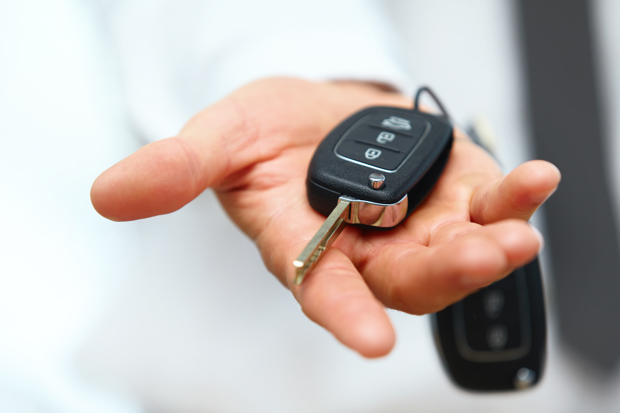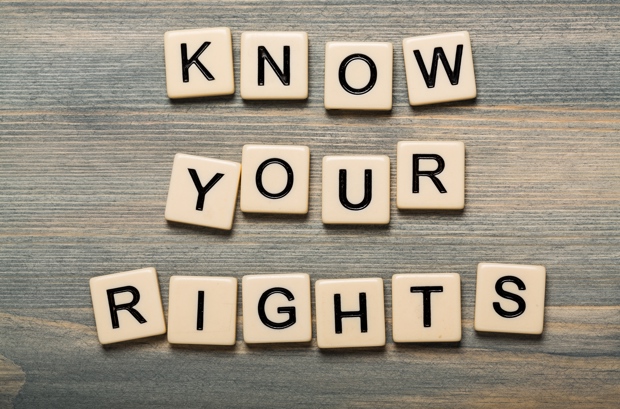How to reject a car: Your consumer rights explained
Buying a car should be straightforward but what happens if something goes wrong? Here's how to reject a car and get a refund.

- Discover how to successfully reject a car
- How the Consumer Rights Act 2015 can help you
- Short term right to reject explained
If there’s something wrong with a new or used car you have bought, you might have a legal right to have the vehicle repaired or get your money back. This is thanks to the Consumer Rights Act 2015.
If the vehicle isn't of satisfactory quality, isn't fit for purpose or doesn’t match the description you were given - including any advertisement of the vehicle - then you can reject the car.
Cosmetic issues or minor faults aren't valid reasons to reject a vehicle. These sorts of issues should be dealt with under warranty, if you have one.
You can’t successfully reject a car for a trivial reason such as a little scratch or finding out you don’t like something about the car. Unless, for instance, you bought it for a specific purpose. If you bought a car to tow a caravan and then you find out it cannot, for example.
What to do if a dealer sells you a faulty car?
If you find you have purchased a vehicle that was faulty when it was bought, or if it is not as was advertised, then the best course of action is to contact the dealer or individual who sold you the car. If it was described as 'like new' and isn't, for example, that's a breach of your rights.
Step 1
If you discover a fault with a car you’ve just bought, don’t immediately reject it. The fault may be relatively easy to fix. You’ll save time and hassle getting it repaired, rather than trying to reject it. The dealer may also not agree that the vehicle should be rejected.
The dealer doesn't owe you an immediate refund, they'll probably want to conduct their own assessment of the vehicle to see if you are owed your money back. Be aware of the timescales (listed below) though.
Step 2
Escalate the issue as high as you can in hopes that it gets resolved so you can avoid any legal action. Legal action is costly, time-consuming and stressful with no guarantee you'll win.
Write to both the dealer principal and send your letter by Post Office Special Delivery so you get receipts for them and your letters become 'matters of record' - which can't be denied.
Step 3
If the dealer refuses the rejection or doesn't respond, get in touch with Trading Standards. Keep a record of your conversations and correspondence and get all verbal agreements confirmed in writing - including when you can expect the car to be ready if you’re asking for a repair, plus whether they’ll offer you a courtesy car in the meantime.
If you are entitled to a refund, it must be given within 14 days of the trader agreeing that you are owed your money back.
You don't have to accept a second repair if something goes wrong and you'd rather not keep the car. You can ask for your money back if the repair hasn't solved the problem. You're likely to only get some of your money back depending on how much you've used the car. Alternatively, if you still want the car, you can ask for a discount.
Your rights in the first 30 days: The short-term right to reject
The 2015 Consumer Rights Act covers the purchase of goods, digital content and services - including new and used cars - from official dealers.
It doesn't apply to private sales. It outlines the fact that vehicles must be of satisfactory quality, fit for purpose and as described. For cars purchased before 1 October 2015, the Sale of Goods Act still applies.
This Act gives you the statutory right to reject a new or used car (or anything else) within 30 days of purchase if your rights have been breached. This is called the short term 'right to reject'.
It covers faults that were present - or developing - when you bought it, or it was received in a condition that does not match what you were told. But it'll be up to you to prove that's the case. After 30 days you lose the short-term right to reject.
Your rights are against the supplier - which is the dealer (and the finance company jointly if you bought it on finance) - not the manufacturer.
Your rights: After 30 days
If a fault comes to light between 30 days and six months of buying a vehicle, you’re entitled to a repair, replacement or refund.
It’s assumed in law that the fault was present at the time of purchase unless the seller can prove otherwise.
Unless you’ve agreed otherwise, the seller (dealer) has only one opportunity to repair (or replace) the faulty vehicle after which, if they fail to repair it, you’re entitled to a refund. But the seller may make a 'reasonable' adjustment to the amount refunded by taking into account the use that you’ve had of the vehicle.
For example, if you successfully reject a car for a refund, the dealer may take off the cost you'd have paid if you rented a similar vehicle. So, if you had a car for three months, and the typical monthly rental cost of that car is £200 - they could rightfully take £600 off the refund you receive.
Your rights: After six months...
The burden is on you to prove that the vehicle was faulty at the time of purchase if you want to pursue a claim for repair or replacement.
But you have legal rights for up to six years (five years if you bought the car in Scotland) after buying - these Acts are known as The Limitation Act 1980 and The Prescription and Limitation Act (Scotland).
This typically occurs, say, if you're having work done on the car and it's discovered that damage was hidden - meaning the real condition of the car was concealed (mis-selling).
The longer you’ve had the car, the harder it'll be to prove that the problem was there when the trader sold it.

What about private vehicle sales?
When buying privately (from an individual rather than a business), you have far fewer rights. You only have rights if the car isn’t as it was described under the Misrepresentation Act 1967.
The car should be true to the advert and what you were told by the person you bought it from. You won’t be entitled to anything just because the car is faulty or because the seller failed to mention something in the advert.
However, the seller must accurately describe the car, such as the number of previous owners. They must also not misrepresent it, for example not disclosing that it has been involved in an accident or providing a false service history.
The car must be roadworthy, too. It's a criminal offence to sell an unroadworthy car and an MoT certificate from a test several months ago is no guarantee that the car is roadworthy today.
If the individual refuses to accept your rejection, you will need to take legal action to reject the vehicle or try alternative dispute resolution. However, legal action is expensive and there's no guarantee that you will win.
If the vehicle isn't 'as described', you can either ask for the difference in value between what you paid and what the car is really worth or ask for the cost of making changes to the car so it matches the description.
The statute of limitations means you have rights for six years after buying the car (five years if you bought the car in Scotland), but it’ll be harder to prove how it was described as time goes on. Make a note of any evidence you have - for example, an advert or an email.
Keep a record of your conversations and correspondence, and get all verbal agreements in writing. If you’re still not getting anywhere, your last resort is to take your case to a small claims court.
What is the Motor Ombudsman and should I use it?
The Motor Ombudsman is designed to help consumers if things go wrong when buying or servicing a vehicle. It's essentially a mediation service to help consumers and businesses find resolutions to disputes.
However, despite having the word 'ombudsman' in the title, it is not backed by the Government in anyway. It is also funded by its accredited businesses which are made up of vehicle manufacturers, vehicle warranty product providers, independent garages and franchised dealers. In other words the very people you as a consumer are trying to get a refund from.
It has Codes of Practice, which cover transparent wording of adverts and pricing, clear and transparent invoicing and the sale of a used car which is supported by a vehicle provenance check to ensure that it has not been stolen, written-off and is free of any outstanding finance payments.
It also highlights that retailers should provide test drives, avoid high-pressure selling techniques, supply accurate advice on warranty and finance products, and deliver a vehicle with a full handover, complete with all historic documentation, the entire service history and a valid MoT certificate.
In our experience, the Motor Ombudsman is ineffective and best avoided. You will get a better service and more comprehensive advice from Citizens Advice. You can look up the Motor Ombudsman on TrustPilot to see what other people think...
What if I've part exchanged a car?
If you part-exchanged your old car for the new one, you will not get it back. Instead, you'll be entitled to the price of the part-exchanged car. The dealer can't charge for usage, wear and tear, collection of the vehicle or anything else.
After the 30 days, if you part-exchanged your old car, you'll get a cash value for the new car. In this instance, the dealer is able to claim a reduction in the value of the vehicle for factors like mileage covered.
What about the Small Claims Court?
The first bit of advice is to try to settle the matter without going to court. Once a dealer knows you know your legal rights, they're more likely to settle - as long as you are being reasonable.
Court is a last resort but for many frustrated consumers it's often the only way to get anything to happen. If the dealer and finance company refuse to accept your rejection of the car, you can't continue to use it while taking County Court action against them and that could mean your car sitting on your driveway unused for months on end.
The limit for claims in the Small Claims Track of the County Court was raised from £5000 to £10,000 in 2013, making this service much more useful in disputes over purchases of cars.
Be aware that you have to pay to make a claim at Small Claims which is based on the amount you're claiming, plus interest. So for example, if you're claiming for between £5000 to £10,000, the fee is £455.
What if the dealer still won't accept a rejection?
If you get a County Court ruling in your favour and the dealer ignores it, you can apply for a High Court Sheriff's Enforcement Order (costing £70) which empowers the Sheriffs to seize the debtor's assets to the value of the claim, plus all your and their costs.
Sometimes the debtor will attempt to apply to the Court for a 'Stay of Execution' but such applications usually fail. The culture of these people is to only ever pay when they absolutely have no other choice, and in most cases when the Sheriffs arrive they pay up.
Can I reject a car on finance?

What if I think I've been mis-sold a car?
As an example, if you explain to a dealer that you only do short trips and have a low annual mileage, but they sell you a diesel car, this could be classed as mis-selling.
Diesel vehicles are not suitable for short trips, they need to be driven around 15,000 miles a year for the DPF to actively regenerate. If not, it can lead to expensive repairs.
Unfortunately, unless you have written evidence then you have no case for a refund. Emailing the dealer to outline what you need/want from the vehicle will ensure you have proof of mis-selling if an issue arises.
My new car is not what I ordered?
Sometimes it's as small as a different navigation being fitted or an owner needs a tow bar and the car can't be fitted with one. Other times it's big changes such as a different engine or the wrong colour paintwork.
If you specifically order something and don’t get it, then you simply refuse to accept the car. But if the manufacturer changed the specification, the dealer has no control over that and he may try to push you to accept the car.
I didn't see the vehicle before buying?
I've just changed my mind...
If you’ve changed your mind about the car and there’s nothing wrong with it, you don’t have an automatic right to get your money back.
But you get a 14-day 'cooling-off period' when you buy something you haven’t seen in person (unless it’s bespoke). The cooling-off period starts the day after you receive your order, and there doesn’t need to be anything wrong with the item for you to get a refund. But this doesn't apply to a private seller, only a business - like a dealer.
Protection from Unfair Trading Regulations
Dealers must comply with the Consumer Protection from Unfair Trading Regulations (2008), which prohibits them from engaging in unfair business practices like giving false information and giving insufficient information. For example, not disclosing the results of checks carried out or failing to draw your attention to the key elements of any warranty.
It also prevents them from acting aggressively, like using high pressure selling techniques. There are 31 specific practices which are banned outright including: falsely claiming to be approved, endorsed or authorised by a public or private body, and falsely stating that a vehicle will only be available for a very limited time in order to elicit a faster decision to buy.
